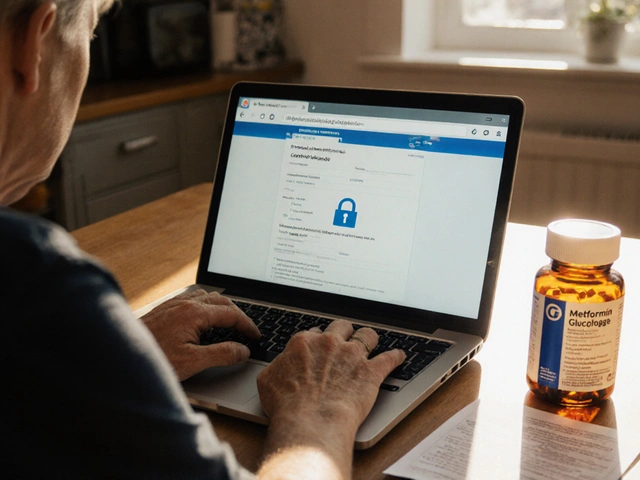Azilsartan (Edarbi): A Practical Guide for People with High Blood Pressure
Azilsartan is an ARB (angiotensin II receptor blocker) prescribed for high blood pressure. If other blood pressure pills didn’t work well for you, azilsartan is one option doctors often try because clinical trials showed it can produce larger drops in blood pressure than some older ARBs.
Dosage and how to take
The usual starting dose is 40 mg once daily. Many people stay on 40 mg; some need a higher dose up to 80 mg once daily. Take it at the same time every day, with or without food. If you miss a dose, take it when you remember unless it’s almost time for the next dose—don’t double up.
If you’re dehydrated, on a diuretic, or have low blood pressure, your doctor may start lower or pause the diuretic first. Older adults and people with kidney or liver problems may need closer monitoring—even if the dose stays the same.
Safety, monitoring and interactions
Common side effects are dizziness and lightheadedness—especially when you first start or after a dose increase. Some people see a small rise in blood creatinine or potassium. Serious problems are rare but include very low blood pressure, marked kidney function drop, and high potassium (hyperkalemia).
Your doctor will usually check blood pressure, kidney function (creatinine) and potassium within 1–2 weeks after starting or changing the dose. Don’t take potassium supplements, salt substitutes that contain potassium, or other drugs that raise potassium without checking with your provider.
Watch drug interactions: NSAIDs (like ibuprofen) can blunt azilsartan’s effect and raise the risk of kidney issues. Combining azilsartan with lithium requires close monitoring because lithium levels can rise. If you’re on other blood pressure meds, combining classes is common, but your clinician will adjust doses to avoid low blood pressure.
Never take azilsartan during pregnancy. Drugs that act on the renin-angiotensin system can harm the fetus. If you plan to become pregnant, talk with your clinician about switching medicines.
How to tell if it’s working: lower home blood pressure readings, fewer headaches, and fewer dizziness episodes from high blood pressure. If your blood pressure remains high after a few weeks, your doctor may increase the dose, add another medicine, or check for causes like missed doses or white-coat readings.
Buying meds online? Always use a licensed pharmacy and a valid prescription. Our site has guides on how to buy blood pressure meds safely and what to watch for when ordering online. If you have any side effects or questions, call your provider—don’t stop azilsartan suddenly without medical advice.
Got more specific questions about dosing, side effects, or combining azilsartan with other drugs? Ask your pharmacist or clinician—they can tailor advice to your health history and current meds.
Georgea Michelle, Apr, 27 2023
The Role of Azilsartan in Treating Hypertension in Cancer Patients
As a blogger, I recently came across an interesting topic regarding the role of Azilsartan in treating hypertension in cancer patients. Azilsartan, an angiotensin receptor blocker (ARB), has shown promising results in managing high blood pressure in these patients. This is especially important because cancer patients often experience hypertension as a side effect of their treatments. Incorporating Azilsartan in their medication regimen can potentially improve their quality of life and overall health. It's truly fascinating to see how modern medicine continues to evolve and find innovative ways to tackle complex health issues.
View More





